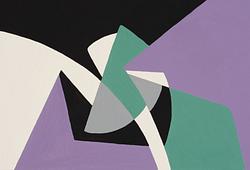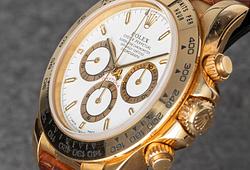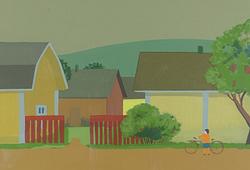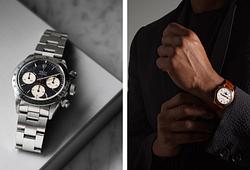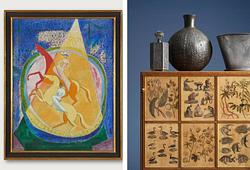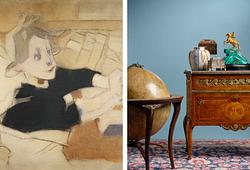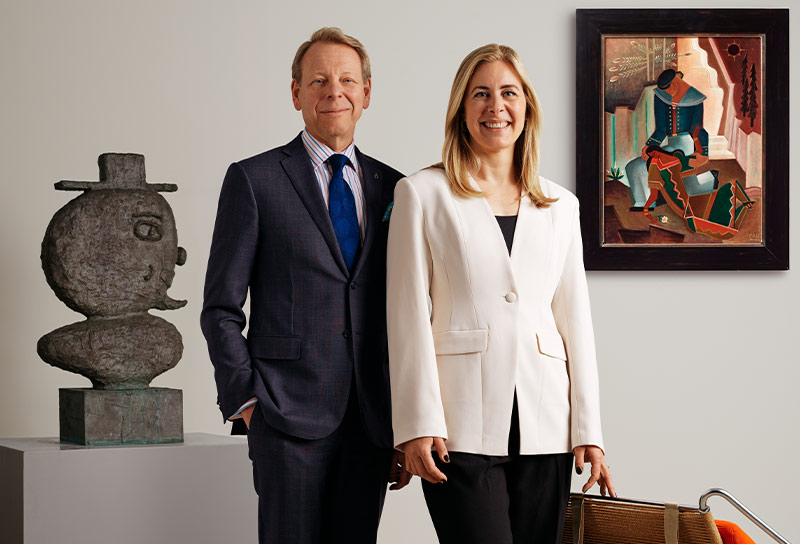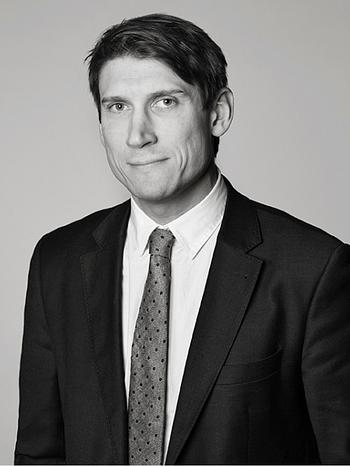Modern Art + Design presents Bernard Buffet
Bernard Buffet Le poissonnier
“La peinture, on n’en parle pas, on ne l’analyse pas, on la sent” (“Painting, we do not talk about it, we do not analyse it, we feel it”) – these are Bernard Buffet’s own words and describe a way of approaching his art. No matter if it is a landscape, still life or a portrait that he has painted there is always a demanding voice that urges the viewer to confront reality.
Buffet was born in 1928 in Paris and grew up in a well-to-do bourgeois environment. Despite being clever he didn’t have a particularly successful time at school and it seems studying was a bit of a bore to him. The only subject he showed any interest in was science, which must have given him many ideas for his drawing as he made numerous sketches of plants and animals. The interest in the precise, objective and in-depth study of an object is a consistent trait in his painting and printmaking. It was, however, not enough to graduate, which is why Buffet was encouraged to seek alternative avenues. He signed up for drawing classes and succeeded as a 15-year-old to pass the entrance exam for École Nationale Supérieure des Beaux-Arts. For a few years, he was taught in Eugene Narbonne’s studio where he was predicted to have a brilliant future. In 1945-46 Buffet moved on by himself – the spirit of art in post-war France was rather resigned and backwards looking. Buffet’s artist colleagues admired Picasso, but he wanted to express and see something else. It was now that he began to develop his characteristically moody and gruff style that totally broke away from both the prevailing figurative painting and the abstract painting of the time. The strongest, most powerful pieces in the artist’s oeuvre are considered to be the ones executed at this time, between about 1945 and 1965. The painting in the auction comes from this period.

In the post-1945 French art scene Buffet became known as something of an ‘enfant terrible’ – very early on, already in his twenties, he had had big commercial successes, partly thanks to his lifelong friendship with the gallery owner Maurice Garnier.
Audiences liked his ‘brutal neo-realism' and his ‘medieval craftsmanship’, whilst the French critics were less impressed or convinced. At one point the magazine Der Spiegel even described Buffet as “the man with the golden touch who has become the 20th century’s most ridiculed and lambasted artist, a pariah amongst the critics”. This did not, however, stop him from being chosen in 1955 as number 1 out of 10 of the most successful post-war artists, following a vote organised by the journal Connaissance des Arts. In 1974 he was elected into the L’Académie des Beaux Arts and throughout his life, he received several important honours, including the Chevalier de la legion d’Honneur. Buffet is an international big name and his work is exhibited widely. His painting and printmaking can be found in collections across the world.
Buffet’s artistic life might have been quite fortunate but his personal life had a rather tragic and dramatic ending. In the late 1990s he was afflicted with Parkinson’s disease, which gradually made his ability to draw and paint to deteriorate. When on the 4th of October 1999 the illness had finally reached the stage where he was unable to work he committed suicide in his studio situated in Domaine de la Baume, close to the city of Tourtour.
The present painting has previously belonged in the collection of cinematic director Jean Negulesco. Buffet had painted Negulesco’s portrait and he had a collection of several of the artist’s works.
Viewing November 11 – 16, Berzelii Park 1, Stockholm
Open Mon–Fri 11 am–6 pm, Sat–Sun 11 am–5 pm.
Auction Live November 17–18, Arsenalsgatan 2, Stockholm
For more information Contact specialist
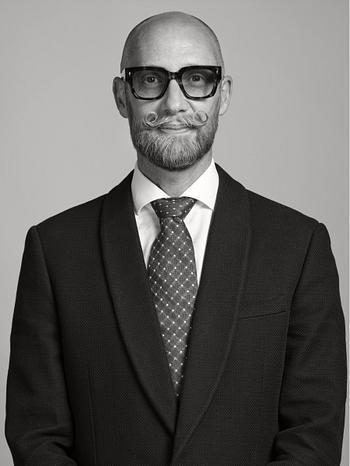
Tukholma
Björn Extergren
Johtava asiantuntija sisäänjättö ja myynti. Asiantuntija antiikkikalusteet, taidekäsityö ja aasialainen keramiikka
+46 (0)706 40 28 61

Tukholma
Lena Rydén
Johtava taideasiantuntija, moderni- ja 1800-luvun taide
+46 (0)707 78 35 71
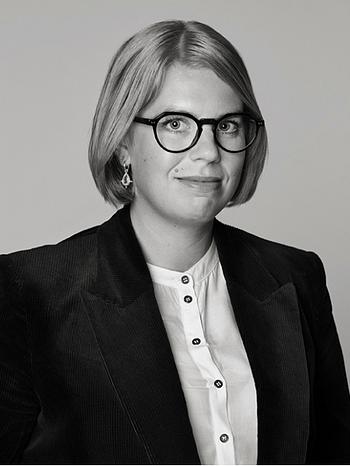
Tukholma
Amanda Wahrgren
Asiantuntija, moderni taite ja grafiikka
+46 (0)702 53 14 89




